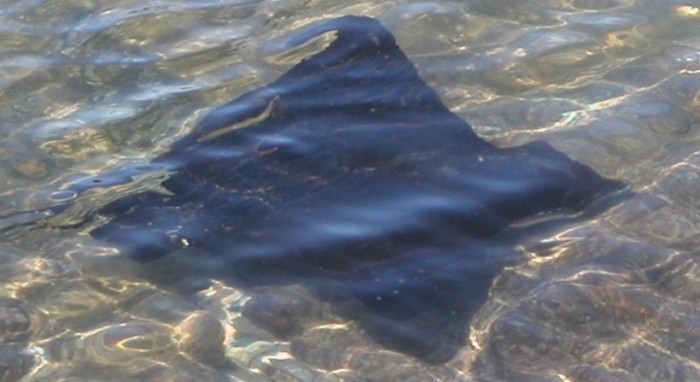Daily Diving
The waters of Galapagos are remarkably safe, but as with all natural environments, there are some risks to be aware of.
The coelenterates (hydroids, anemones, corals, gorgonians, and jellyfish the whole cause no problems but there are two kinds that should be avoided. The stinging hydroids look like small white feather like plants and grow in the rocks to a height of about one foot- They are in fact colonial animals. Their setting is not dangerous, but you may wonder why your fingers have prickly feeling after touching rocks. The species of man-of-war jellyfish occurs here has a much more serious ting. (Jellyfish are known locally as “mala”, literally “bad water”). Their distribution is very patchy and they are not present all year round. As their stings can be painful it is a good idea to swim elsewhere if you encounter them.
Sea urchins with pointed spines can be a problem, since the spines break off very easily and are very difficult to remove.
Stingrays have a bad reputation, and are common in Galapagos. They are not aggressive, however and only use the tail-barbas a means of defense. In shallow, murky water one should shuffle one´s feet when walking and the rays, which often bury themselves in sand, will move away.
Sharks are also common in Galapagos, and it is quite possible to see the reef white tip shark while snorkeling. Divers many see many sharks, and hammerheads especially are often seen schooling in large numbers (the reasons are unknown). But remember there is no record of a shark attack on a human being in the open waters of Galapagos. Although these animals should be respected to see one should not be a signal to leave the water immediately. Indeed, sharks deserve our appreciation of their beauty and efficiency.

Pufferfishes are poisonous to eat, but they are not dangerous should they touch you.
The spines of the scorpion fish are poisonous, so it is as well to be observant. These fishes are extremely well camouflaged among rocks and weeds.
It should be emphasized that diving and to a le88sser extent snorkeling, does require a certain amount of preparation, mentally as well as physically. It is important to listen to our guide[s instructions, for the following reasons:
- Much of the diving is in relatively open stations, where currents may be flowing.
- The water can be quite clear, but it may also be quite murky, especially in the first 45 feet or so, where plankton growth is rapid. It is easy to lose one’s buddy and one’s local reference points.
- Extreme caution should be exercised when making repetitive dives and taking risks, since there is no diving, medical facility within th archipelago. A good wetsuit is essential equipment for divers since the water temperature is low relative to other tropical regions. Snorkelers, however, should not be greatly inconvenienced by the water temperature is low relative to other tropical regions. Snorkelers, however, should not be a greatly inconvenienced by the water temperature, except in the colder period (July – November) when a wetsuit is advisable for longer sessions.

Daily diving options
- Gordon rocks
- North Seymour
- Cousins Rocks
- Mosquera
- Daphne Menor
- Bartholomew
- Floreana
Price per day per person USD229.00
Not included
- Diving insurance